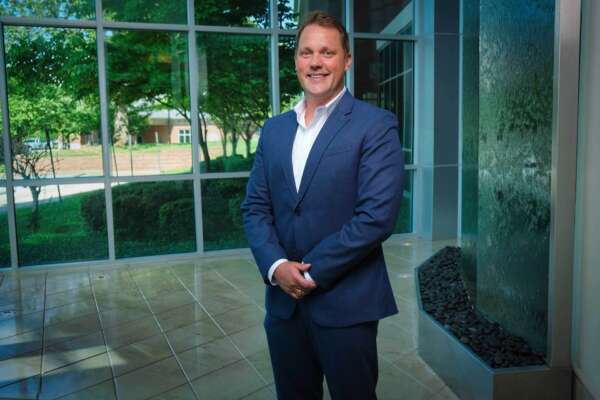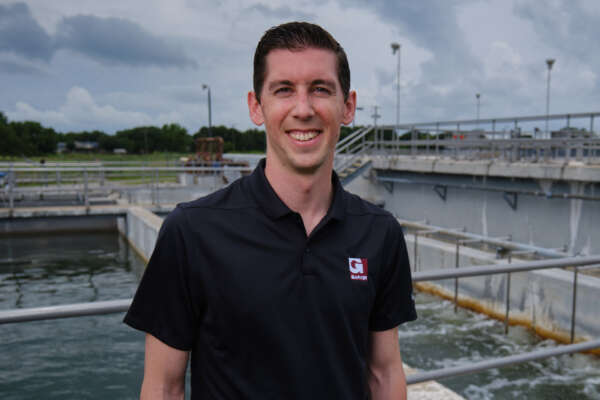USEPA has designated two PFAS hazardous substances under CERCLA, raising questions about liability and funding. Here's what water utilities should do in response.
On April 17, 2024, seven days after the United States Environmental Protection Agency (USEPA) finalized the National Primary Drinking Water Regulation (NPDWR) for per- and polyfluoroalkyl substances (PFAS), they officially designated two PFAS - perfluorooctanoic acid (PFOA) and perfluorooctanesulfonic acid (PFOS) - and their salts and structural isomers as hazardous substances under the Comprehensive Environmental Response, Compensation, and Liability Act (CERCLA).
A powerful federal tool, CERCLA (which is also known as Superfund) was enacted in 1980 to address public concern about hazardous waste sites. CERCLA is designed to direct and facilitate assessment and cleanup of contaminated sites and also includes statutory authorities for responses to potential and known releases of hazardous substances into the environment. A hazardous substance designation under CERCLA triggers a requirement to report releases at or over a set limit and grants USEPA the authority to order cleanup actions and determine those entities liable for the costs of cleanup.
CERCLA’s liability framework is built around the polluter pays principle, which is as simple as it sounds: costs for pollution-related environmental damage, or for the prevention of such damage, should be paid by whatever party is responsible for producing the pollution, also known as the potentially responsible party (PRP). A Hazardous Substance Trust Fund (Superfund) exists, and USEPA may use Superfund money to pay for remediation efforts and then be reimbursed by PRPs, or in cases when a responsible party cannot be identified or cannot pay for the cleanup. But whenever possible, PRPs should pay.
What does this mean for water utilities? In accordance with the Emergency Planning and Community Right-to-Know Act (EPCRA) and CERCLA, USEPA has the authority to order facilities to report the releases of these PFAS and their salts or structural isomers if releases equal one pound or more within a 24-hour period.
The CERCLA designation also gives USEPA the authority to mandate response actions for PFOA and PFOS cleanup and recover the cost of those actions from PRPs. And this, of course, points to an area of concern for water utilities. Anyone working in the water, wastewater, or stormwater industry knows that water has no boundaries. PFAS may enter drinking water utilities via source water and come to wastewater utilities from the sewershed. Both drinking water and wastewater treatment facilities may have PFAS in their residuals or biosolids, and permitted discharges may also include those PFAS. What is their liability risk? How will EPA determine which entities are PRPs?
An April 19, 2024, USEPA memorandum on PFAS Enforcement Discretion and Settlement Policy Under CERCLA from the Assistant Administrator for Enforcement and Compliance Assurance David M. Uhlmann offers insight into how USEPA views PRPs related to PFAS: “…EPA intends to focus its enforcement efforts on entities who significantly contributed to the release of PFAS contamination into the environment, including parties that manufactured PFAS or used PFAS in the manufacturing process, federal facilities, or other industrial parties.”
Uhlmann explicitly states that USEPA does not intend to pursue community water systems, publicly owned treatment works (POTWs), municipal separate storm sewer systems (MS4s), publicly owned or operated municipal solid waste landfills, publicly owned airports and local fire departments, or farms where biosolids are applied to the land for response actions or costs under CERCLA.
This is reassuring, but it comes with a caveat. Uhlmann notes that “this policy in no way affects EPA’s ability to pursue any responsible party, including [those listed above], whose actions or inactions significantly contribute to, or exacerbate the spread of significant quantities of PFAS contamination, thereby requiring a CERCLA response action.” The takeaway? Much is still to be defined under CERCLA when it comes to liability.
And, liable or not, where will funding for cleanup of PFOA, PFOS, and the other PFAS specified in the NPDWR, and for lead abatement, and much needed infrastructure improvements come from? Questions about liability and how to stretch limited funding between those pressing challenges are an unavoidable feature of this uncertain time. The good news is that there’s a lot water utilities can do to affect the answers.
Be involved in public comment and outreach sessions and influence funding potential
This isn’t the time to hang back and stay quiet. Of course, utilities should consult with their legal services about liability risks. But they shouldn’t stop there. If possible, it’s a good idea for both water and wastewater utilities to have a representative who can be involved in USEPA public comment periods and voice questions.
Different groups within USEPA and organizations like the Water Research Foundation and WateReuse Association are leading research to create guidance documents and tools for water utilities impacted by PFAS. This is a great opportunity for those in the utility sector to help mold these resources. It may not seem like utilities have a say in what will become the recommended rules of engagement, but they do. And they should - to achieve guidance that truly works best for water utilities, government groups and industry organizations need to be informed by water utilities’ perspective and experience.
Public comment and outreach sessions can do more than influence industry-wide guidance. They can also influence regulations and available funding at the state level. Some states may impose stricter regulations than the federal government and each state’s funding situation is different. Some states may create new funding streams on top of existing federal PFAS funding or announce new grants connected to PFAS. Information gathered during public comment periods helps legislators assume less when it comes to what water utilities need.
Water utilities should also look out for policies and measures in their state legislature that are coming up for public vote. We often only think about voting for candidates - during the presidential election or a senate race, for example. But ballot measures that designate funding and that impact water systems do come up. And when they do the utilities in that state need to know and vote according to their interests.
Voicing questions and comments and monitoring state legislature activity is, no doubt, a lot of work. A consultant can shoulder this burden for water utilities by alerting them to public comment periods, collecting and submitting questions and comments on their behalf, tracking state positions vis-à-vis PFAS regulations, and keeping them informed of legislative activity and voting opportunities.
Diversify funding sources and adopt a big picture view of the challenges
Non-PFAS related challenges can’t be ignored or put on hold and there won’t be enough funding from any one single program or entity to cover all the costs. And, if a utility is named a PRP under CERCLA, they may lose access to some funding programs under USEPA. Diversifying funding sources and strategizing the use of funding will help utilities navigate these challenges.
Finding more sources of funding can start with expanding how we think about PFAS. For example, a lot of funding exists for removing contaminants like arsenic and selenium from water. PFAS are contaminants, too. A water quality or emerging contaminant program may provide an opportunity to find funding that helps address PFAS.
Other sources of funding are on the horizon. USEPA may create new programs that follow their state revolving funds (SRF) programs, which would mean that water utilities qualifying for SRF may also qualify for those new sources of funding. It’s also possible that programs connected to CERCLA specifically could be created, though these would likely be limited. Shifts in the political landscape may also lead to new funding programs, as happened after the lead crisis in Flint, Michigan, raised national awareness of lead contamination. In that case, new programs for funding emerged to help utilities meet demand and not be in violation.
In addition to finding different sources of funding, water utilities can strategize the use of funding. Funding should be seen as an opportunity to achieve more than one goal. A source of funding may be labeled as PFAS money, but utilities should think of it as water money. What else applies that can be fixed with this money? For example, a utility could identify and use a treatment that removes not only PFAS, but also disinfection byproduct precursors, thus improving water quality system wide. Or a water utility may receive funding to advance and upgrade treatment technologies to remove PFAS and then, with that advanced technology, be able to bring a well that requires desalination into service, which will help diversify the water supply.
If possible, seek to collaborate to solve the problem
USEPA maintains the National Priorities List (NPL) of hazardous waste sites across the country eligible for federal funding to pay for cleanup under the Superfund program, or CERCLA. Water utilities should consult the NPL to see if there is already an officially identified Superfund site near them. If a utility knows of a nearby location that could be a potential Superfund site due to the presence of PFAS, that utility and other entities also impacted by PFAS contamination — including PRPs — can partner with USEPA to identify it.
Thus, under CERCLA, water and wastewater utilities have a tool to assist them. In potentially identifying a superfund site, they can collaborate with PRPs and others to obtain funding and USEPA assistance for PFAS cleanup from the site and from their water sources. PFAS are widespread. Only by working together — in some cases with those entities identified as the PRP — and alongside the community is there a path to true success, one that leads to the removal of these hazardous contaminants and protects the public.
How Garver can help
Garver offers comprehensive PFAS services, including funding procurement and public outreach. We help water utilities strategize the use of funding, monitor regulations and funding possibilities state-by-state, and keep track of legislative actions and ballot measures affecting utilities.
We’re also committed to sharing our expertise with those we serve. Contact me, follow Garver online, or visit our website to keep up to date on PFAS news and guidance specific to water utilities.









Share this article